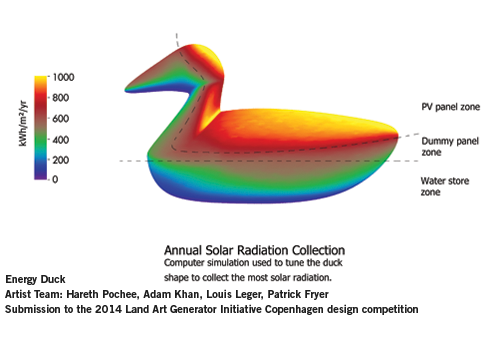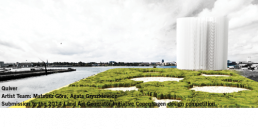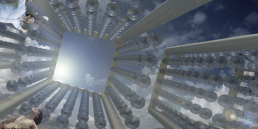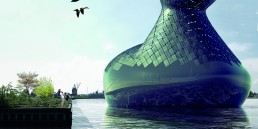Energy Duck
Submission to the 2014 Land Art Generator Initiative Copenhagen design competition
Artist Team: Hareth Pochee, Adam Khan, Louis Leger, Patrick Fryer
Artist Location: London, UK
Energy Technologies: photovoltaic panels (Panasonic HIT or similar), hydraulic turbines (Kaplan, Francis, or similar 100–500 kW capacity)
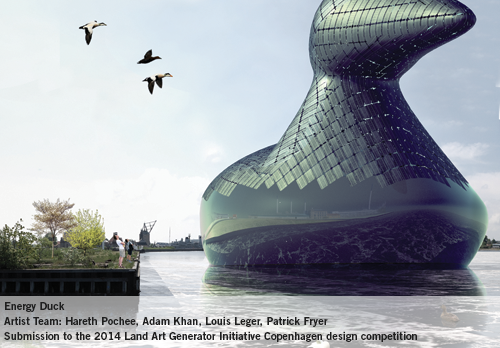
So much more than just a duck! Energy Duck is an entertaining, iconic sculpture, a renewable energy generator, a habitable tourist destination, and a celebration of local wildlife.
The common eider duck resides in great numbers in Copenhagen; however, its breeding habitat is at risk from the effects of climate change. Energy Duck takes the form of the eider to act both as a solar collector and a buoyant energy storage device.
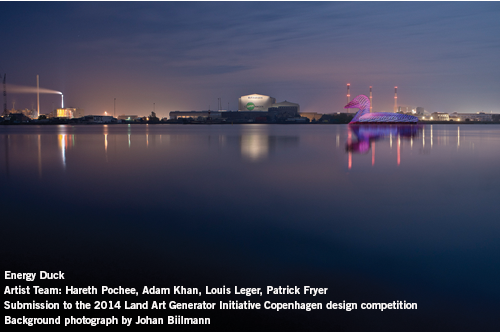
Solar radiation is converted to electricity using low cost, off-the-shelf PV panels. Some of the solar electricity is stored by virtue of the difference in water levels inside and outside the duck.
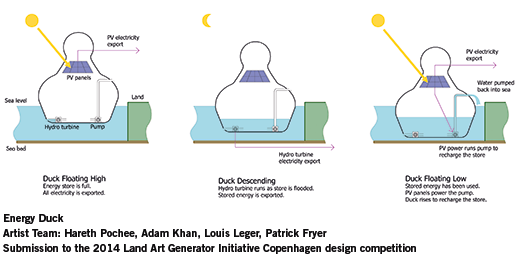
When stored energy needs to be delivered, the duck is flooded through one or more hydro turbines to generate electricity, which is transmitted to the national grid by the same route as the PV panel-generated electricity. Solar energy is later used to pump the water back out of the duck, and buoyancy brings it to the surface. The floating height of the duck indicates the relative cost of electricity as a function of city-wide use: as demand peaks the duck sinks.
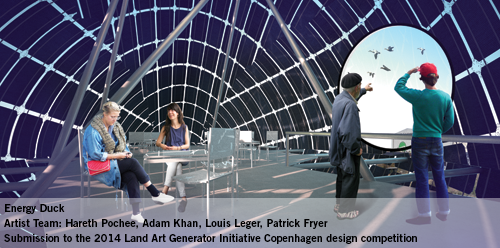
Visitors inside the duck will have views upward to reveal the striking pattern of the mesh of PV panels in silhouette, backlit by daylight streaming through the air gaps. Looking downward allows one to see seawater rising and falling within the pressure storage tanks.
